Gem hunting in South Carolina is a fun, exciting, and rewarding experience for all ages. The state is home to a diverse landscape and numerous gemstones, making it an excellent spot for gem hunters.
Whether you are an experienced gem miner or a beginner looking to find your first semi-precious stone, there are many great locations to search for gems throughout the state. From the hot spots near the major cities of Charleston and Columbia to the hidden gems in the rural areas, plenty of gems and minerals will fit your needs.
So, if you are ready to explore gem mining, here are some of the best locations in this state!
- The extensive local experience and understanding of our team
- Input from several gem hunting groups and organizations
- The accessibility of the mining locations
- Safety and potential hazards when collecting
- Private and public locations
- A desire to include locations for both experienced gem hunters and those who are just starting out
Overall we’ve been able to put together a great list that anyone can use to locate a lot of beautiful gems.
The Gemstones Found In South Carolina You Can Mine
Amethyst
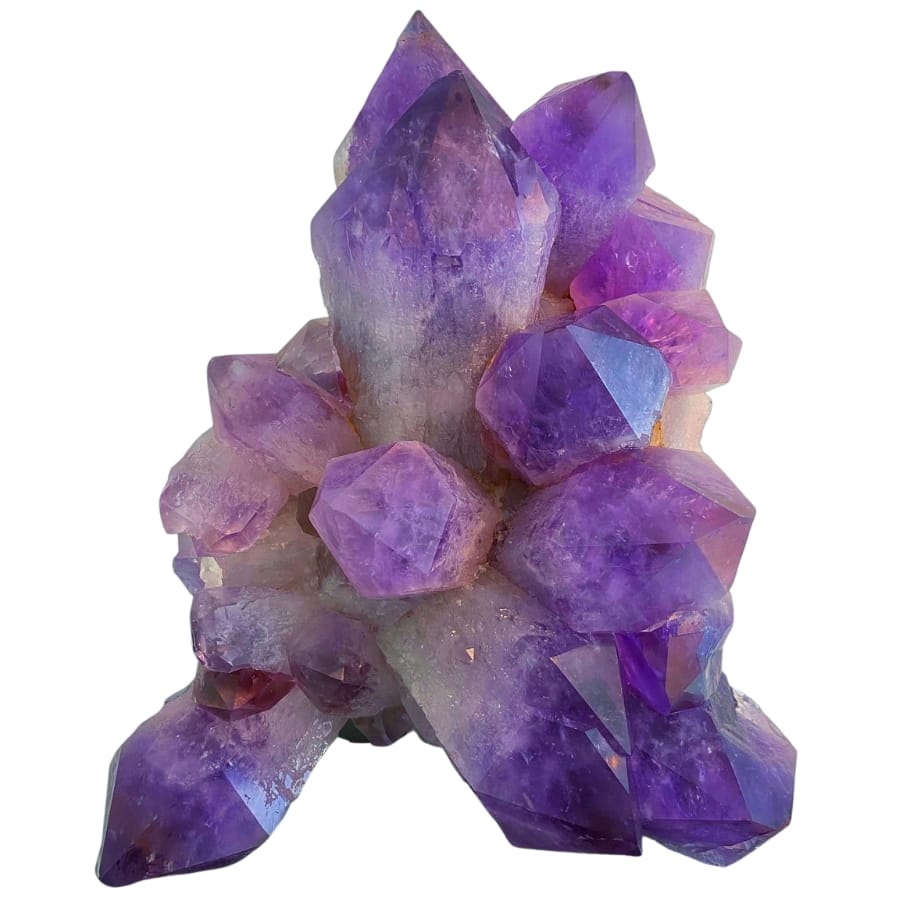
Amethyst is a lovely gemstone recognized for its deep purple color. “Amethyst” is derived from the Greek word “amethystos,” which means “not intoxicated.” People used to believe that wearing amethyst would keep them from getting drunk.
It’s a form of quartz, a common mineral, but its purple color distinguishes it. The hue ranges from a light, almost pinkish purple to a deep, rich purple. Minerals with different purple-colored layers are sometimes seen in the same stone.
Because of its beauty and scarcity, it’s one of the most precious minerals in South Carolina. The state is well-known for producing some of the highest-quality amethysts in the country.
Amethysts are highly prized for their deep color and clarity, making them desirable. It’s commonly used in rings, necklaces, and bracelets. It’s also the February birthstone, so it’s a popular present for anyone born that month.
Where you can find Amethyst in South Carolina
You can locate one-of-a-kind amethyst specimens in the following locations:
- Clearwater
- Diamond Hill Mine
- Ellis-Jones Amethyst Mine
- Lake Murray
- Shoals Junction
Andalusite
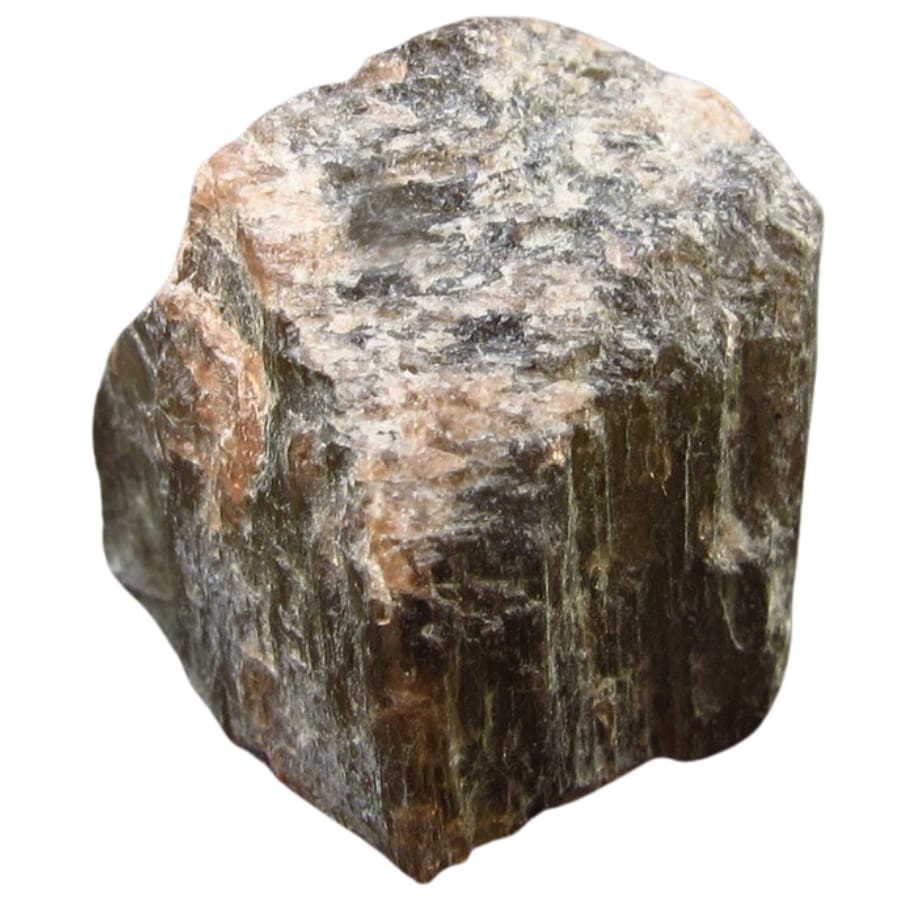
It’s not as well known as diamonds or gold, but andalusite is a really fascinating mineral in its own way. It usually has shades of pink, orange, green, or brown, but the light can sometimes make it change colors.
Interesting thing about andalusite is that it usually makes long crystals that look like columns. There are times when these crystals have a cross-shaped design inside them.
It’s made when rocks that are high in clay are heated up without being pressed too hard. This often takes place near the edges of tectonic plates, which are places on Earth’s surface where the rock is moving and changing.
The clay minerals change into andalusite when these rocks are hidden and get hot. These changes happen because of metamorphism, a fancy word for how rocks change when they’re hot and pressed together.
It’s valuable for people who make jewelry. Because of its unique colors and the way it can look different from different angles, andalusite can be cut into beautiful gemstones.
Where you can find Andalusite in South Carolina
This is where you can find andalusite in the state:
- Henry’s Knob
Aquamarine
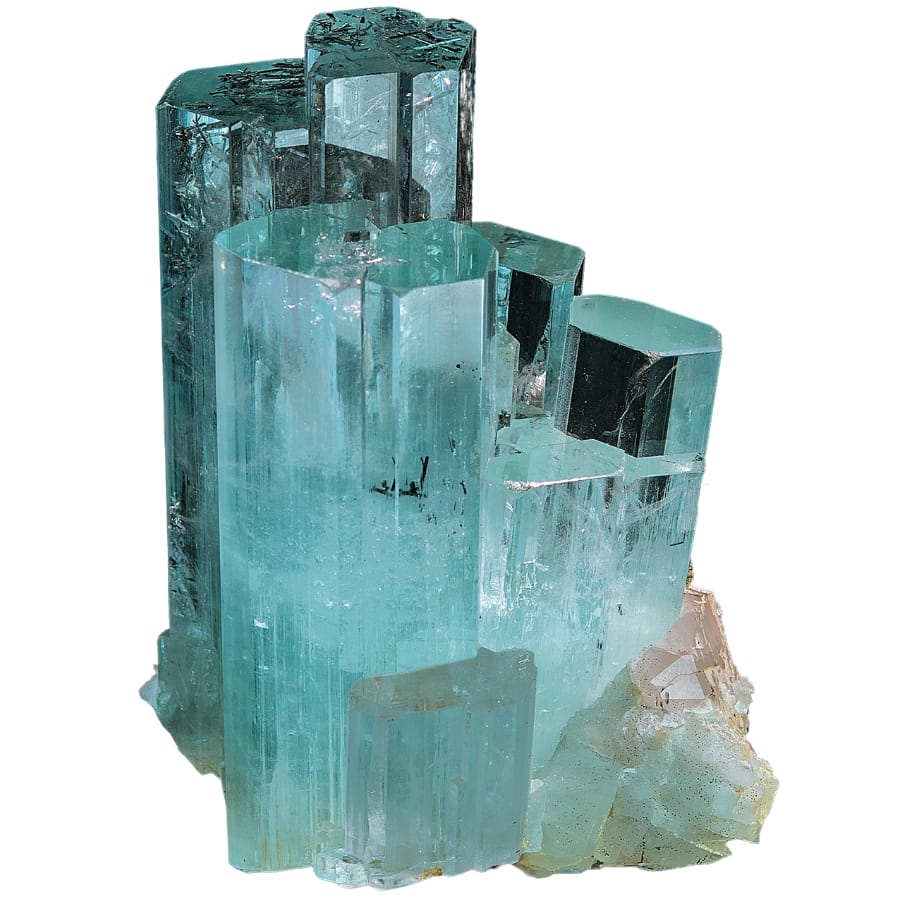
Aquamarine is a pretty gemstone that’s known for its beautiful blue to blue-green color. Like emeralds, aquamarine is a type of beryl, which is a mineral made up of beryllium, aluminum, silicon, and oxygen.
The color of aquamarine comes from iron. The shades can range from a very light blue to a deeper blue, almost like the sea. That’s actually how it got its name – “aquamarine” means “water of the sea” in Latin.
These gemstones are usually found in clear, transparent forms, and they can be really sparkly when they’re cut and polished.
It can look like a piece of the ocean stuck inside a rock, which is one of its coolest qualities. It’s usually found as a crystal. The crystals are big, making them great for cutting into gems.
Pegmatites are a type of rock that forms when magma cools down. Different crystals crystallize as the magma cools, and beryl can be one of them.
When iron is added to beryl, it turns the beautiful blue color we know as aquamarine. It will take between a few thousand and a few million years!
Aquamarine is valuable because it’s often used to make rings, chains, bracelets, earrings, and more. Many people like aquamarine because it looks great in many different styles.
Where you can find Aquamarine in South Carolina
The following are where you can locate aquamarine minerals:
- Coastal Gem Mining
- Greenville Gemstone Mine
- McConnell Mica Prospect
- Savannah River Bank
Barite
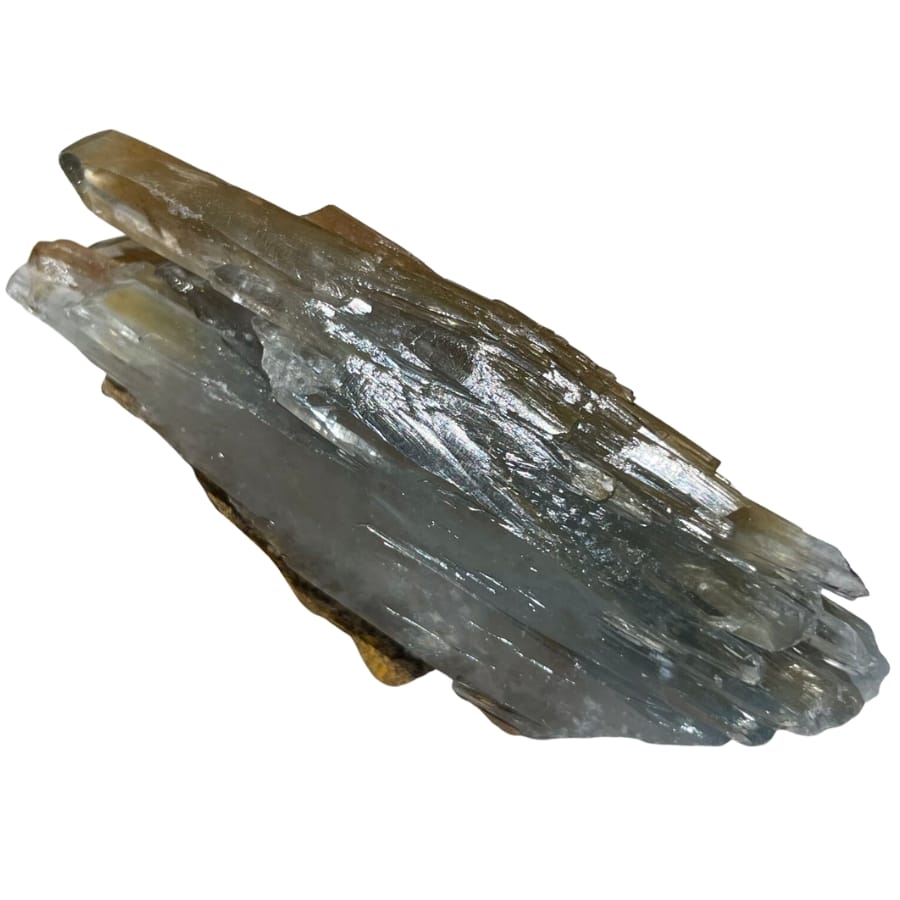
Barite, which is made up of barium sulfate, a combination of barium, sulfur, and oxygen. It comes in a number of colors, such as white, yellow, blue, and gray. For an element that isn’t metal, it’s pretty heavy.
One thing that makes it stand out is its high density. Minerals can take on many shapes, from flat crystals to flexible, blocky, or even earthy ones. In many places, you can find barite, but most of the time it is found in hot springs or sedimentary rocks like limestone where there has been geothermal activity.
It can form in the ocean or big lakes with a lot of sulfate, which is a salty substance. Barite is made when this sulfate and barium mix in water. This barite can get into rocks over time and stay there for a long time.
There are many reasons why people find barite very useful. The oil and gas industry uses it frequently because it’s heavy. You can also use it to help keep the digging safe and under control when they go deep into the ground to look for oil or gas.
Barite is also used to add weight to paint and metals. Plus, it blocks X-rays and gamma rays very well, which is why it’s used in protective clothes like the aprons doctors wear during X-rays.
Where you can find Barite in South Carolina
You can find an abundance of barite deposits at King’s Creek.
Emerald
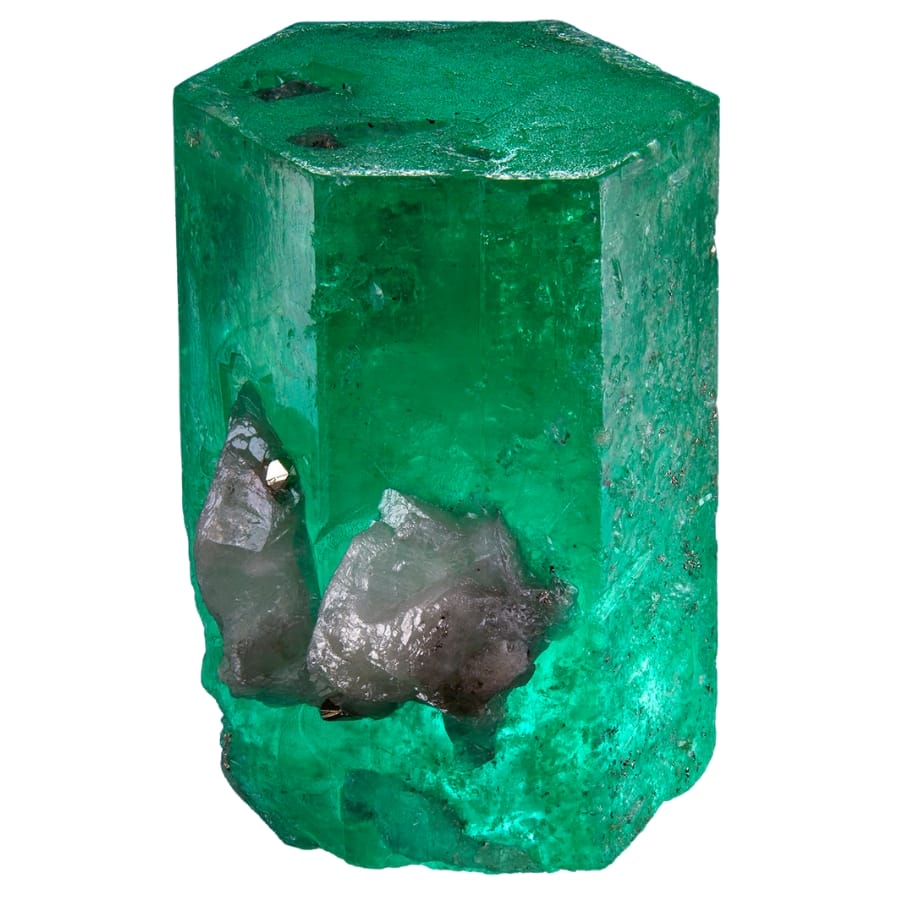
One thing that makes emeralds stand out is their beautiful green color. In fact, they are a type of beryl, which is a gemstone made up of beryllium, aluminum, silicon, and oxygen.
Emeralds are green because they have small amounts of chromium and sometimes vanadium in them. You can find these gems in a range of green shades, from light to very dark. They aren’t found very often compared to other gems, and they often have tiny natural marks or inclusions that make them special, like fingerprints.
Emeralds are very valuable and are often used to make rings, bracelets, and earrings. In many countries, emeralds are seen as very valuable signs of wealth, power, and beauty.
They have also been used in more than just jewelry; like in historical artifacts and things. Even though emeralds are mostly used in jewelry these days, they are still one of the most sought-after rocks in the world.
Where you can find Emerald in South Carolina
Emeralds can be located in these spots around the state:
- Bowen’s River
- Broad River
- Coastal Gem Mining
- McConnell Mica Prospect
Lazulite
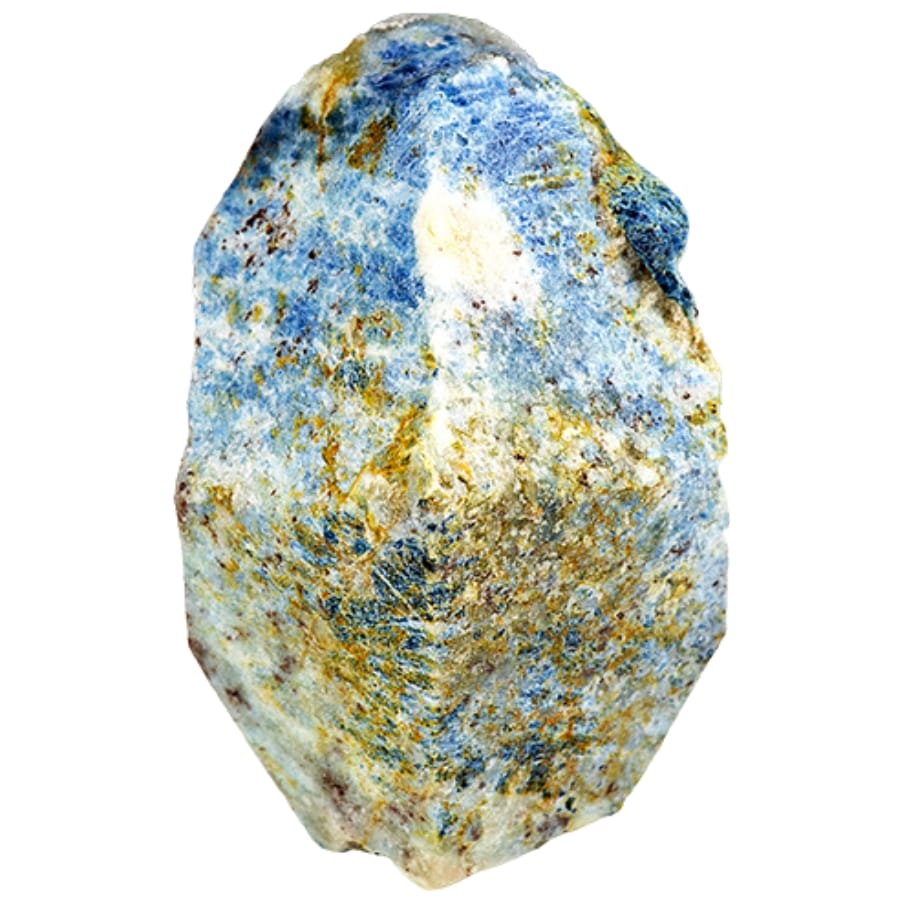
In some lights, lazulite can look a bit like sapphire because of its deep blue color. You can find magnesium, aluminum, phosphate, hydrogen, and oxygen in it.
Although lazulite isn’t as well known as turquoise or sapphire, it’s still a pretty cool blue gem. You can find it in different shades of blue, sometimes with a hint of green. It generally forms in small, crystalline shapes.
The blue color of lazulite can stand out even more when it is found with quartz or other rocks.
Most people value lazulite for how beautiful it is and how rare it is. Gemologists still respect it, even though it’s not often used in jewelry because it’s hard to find and not as soft as some other gemstones.
Others think that lazulite can help with things like meditation and can also be used for gathering. Its deep blue color is often linked to calmness and peace.
Because of this, lazulite isn’t often found in jewelry shops, but people who like unique and beautiful minerals really like it.
Where you can find Lazulite in South Carolina
You can find lazulites in the following places across the state:
- Henry’s Knob
- Worth Mountain
Sapphire
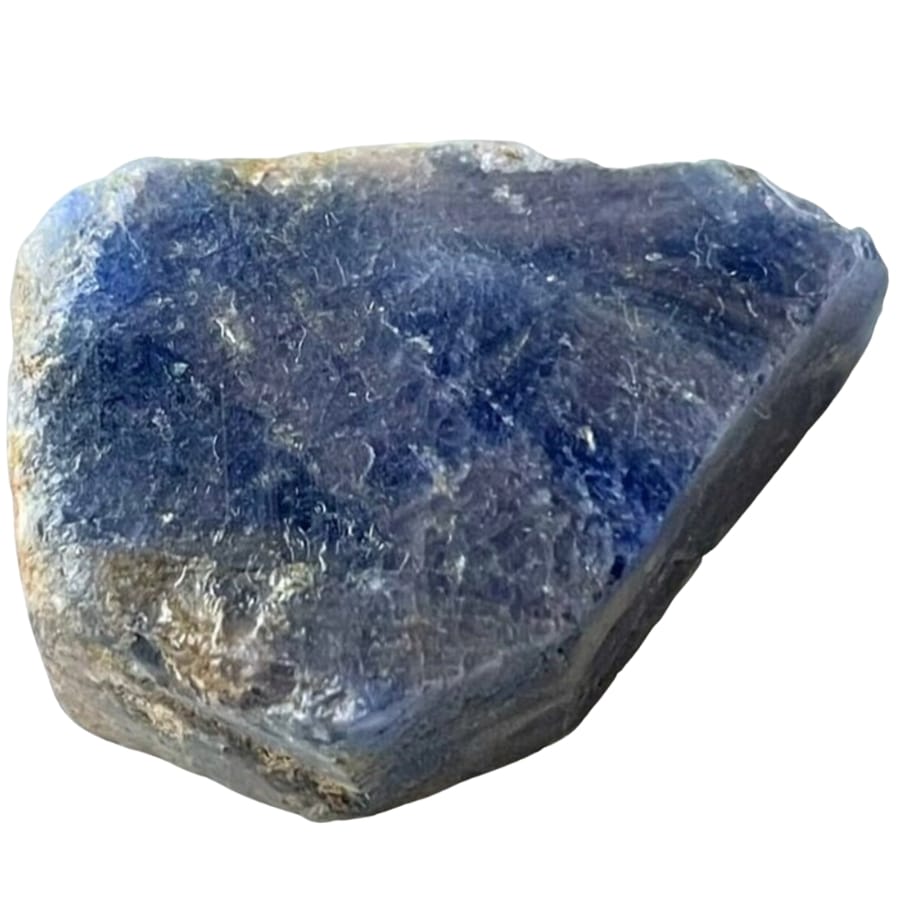
Sapphire is a well-known rock that is best known for its beautiful blue color. But did you know that it also comes in pink, yellow, and even clear? A sapphire is a type of the crystal corundum, which is mostly made up of aluminum oxide.
Tiny amounts of other elements, such as iron, titanium, or chrome, give the rocks their different colors. Most people like blue sapphires. They get their color from iron and titanium.
These gems are very hard, almost as hard as diamonds. This makes them great for making all kinds of jewelry.
Sapphires are very valuable because they’re pretty and strong, which is why people have loved them for a long time. People love them because of their long-lasting quality, which makes them great for everyday use.
A lot of rings, earrings, and bracelets are made with it, and can be used for more than just jewelry. They are so hard that they are sometimes used in scientific tools, windows that last a long time, and even electronic watches.
Where you can find Sapphire in South Carolina
All over the state, you can find sapphire in the following places:
- Bowen’s River
- Broad River
- Coastal Gem Mining
- Greenville Gemstone Mine
Sillimanite
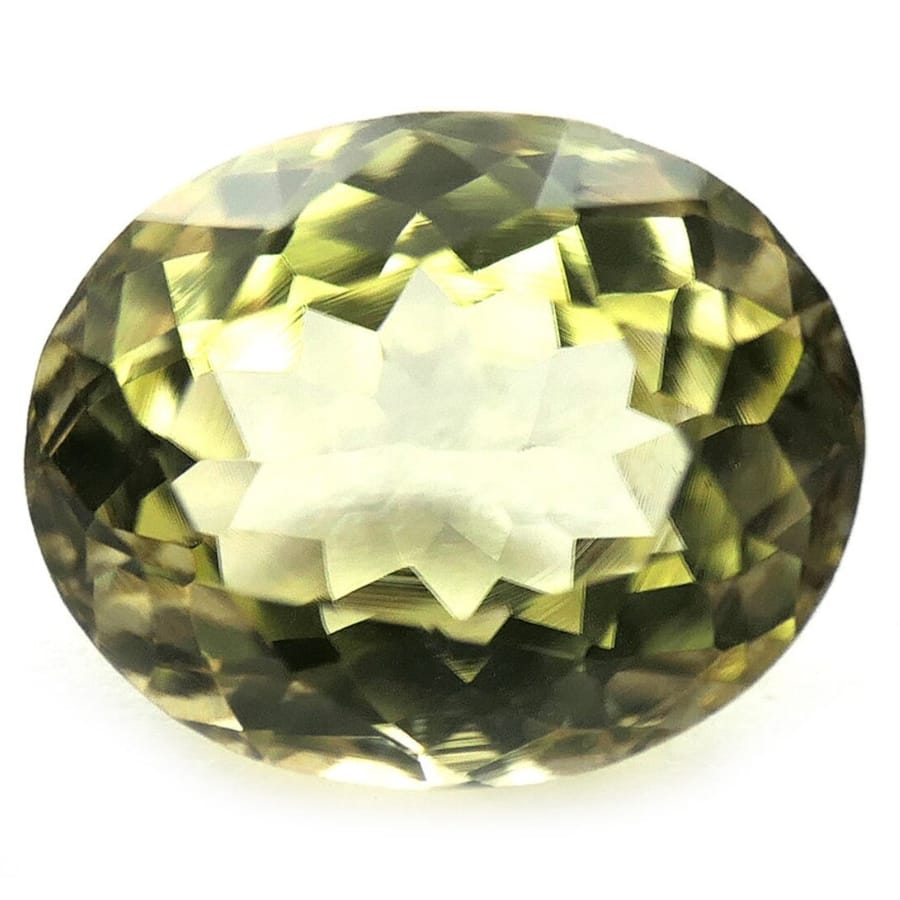
Another interesting mineral is sillimanite. It’s made of aluminum silicate, which is a mix of oxygen, silicon, and aluminum for the most part. A lot of the time, it’s white, brown, or green.
It comes in two different forms: long, thin crystals and more flexible forms that look like a bunch of tiny threads woven together. There isn’t much that can scratch or break it because it’s pretty tough.
A number of things make sillimanite valuable. The first way it’s used is in industry, where its hardness and ability to handle heat make it useful. One use is to make materials that line furnaces and kilns, places where it’s important to have strong materials that can handle high temperatures.
Sillimanite is a gemstone that is liked by fans and is sometimes used to make jewelry. Another gem that isn’t as well known, but has a unique look and can catch the light in interesting ways.
Even though sillimanite isn’t a well-known stone, it has its own place in the rock and jewelry worlds.
Where you can find Sillimanite in South Carolina
Many places in the state have sillimanite minerals, such as these:
- King’s Creek
- Paris Mountain State Park
Topaz

Topaz is a lovely rock that can be blue, yellow, pink, or even clear. It’s a mineral made of aluminum, silicon, oxygen, and fluorine. Topaz has many colors because it contains small amounts of other elements or because heat or other things can change its structure.
It has been a favorite stone for a long time because it’s both beautiful and very hard. It’s one of the hardest gemstones that comes from nature. Of course, this makes it great for rings, bracelets, and earrings.
Topaz is a valuable jewelry and is often given as a gift for important events like birthdays and weddings. A lot of people like blue topaz in particular. Along with being used in jewelry, it’s also collected by people who like gems.
Where you can find Topaz in South Carolina
You can find a lot of topaz in South Carolina in places like these:
- Bowen’s River
- Broad River
- Greenville Gemstone Mine
- McConnell Mica Prospect
Amazonite
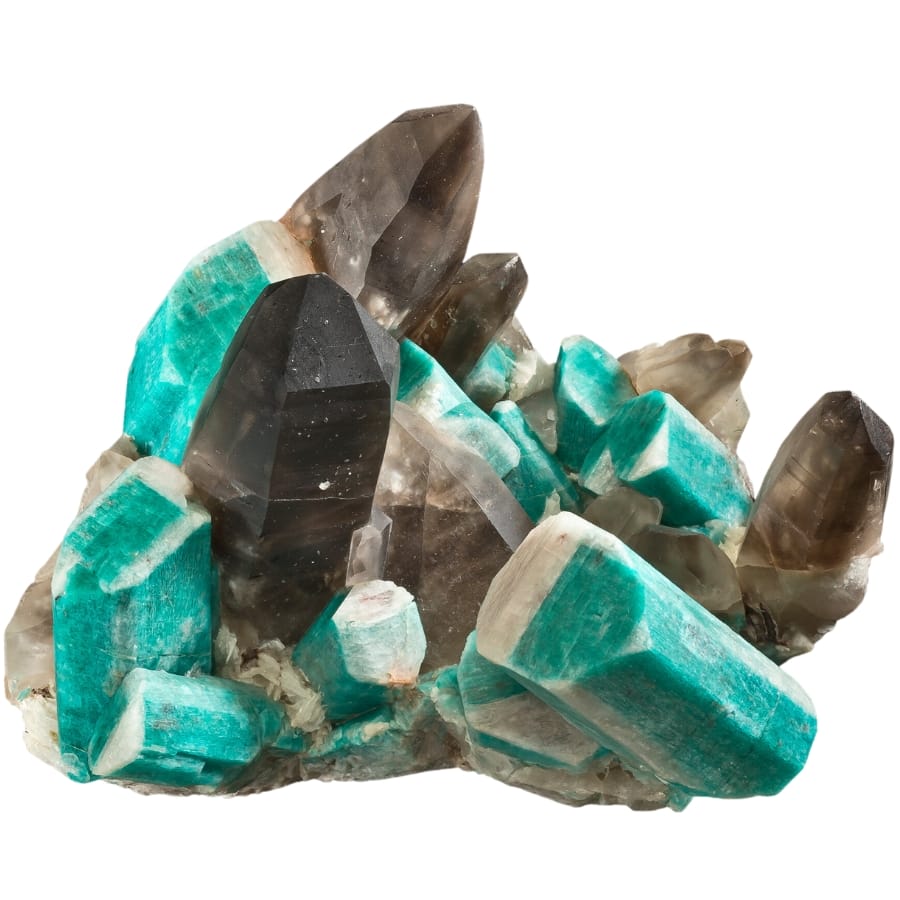
Amazonite is a fabulous gem that is known for its gorgeous turquoise-green color. It’s a type of feldspar, a group of rocks that make up much of the Earth’s crust. The unique green color of it comes from tiny amounts of lead and water in its structure.
Every piece of amazonite is unique because it looks different because it can have white or gray streaks going through it creating a glassy or shiny look.
The word “amazonite” comes from the Amazon River in South America, where people used to believe it was discovered, but this is not the case. Nonetheless, the term survived since the stone’s color resembles the rich green of the Amazon jungle.
Amazonite is valued for its beautiful color. It’s frequently used in necklaces, bracelets, and earrings. Its cool green tint can remind people of tropical waters or a quiet forest.
While amazonite is not as well-known as some other gemstones, it has a unique attraction to individuals who love its brilliant color and smooth, gleaming appearance.
Where you can find Amazonite in South Carolina
Amazonite can be found in South Carolina on these sites:
- Willimon Mine
Beryl
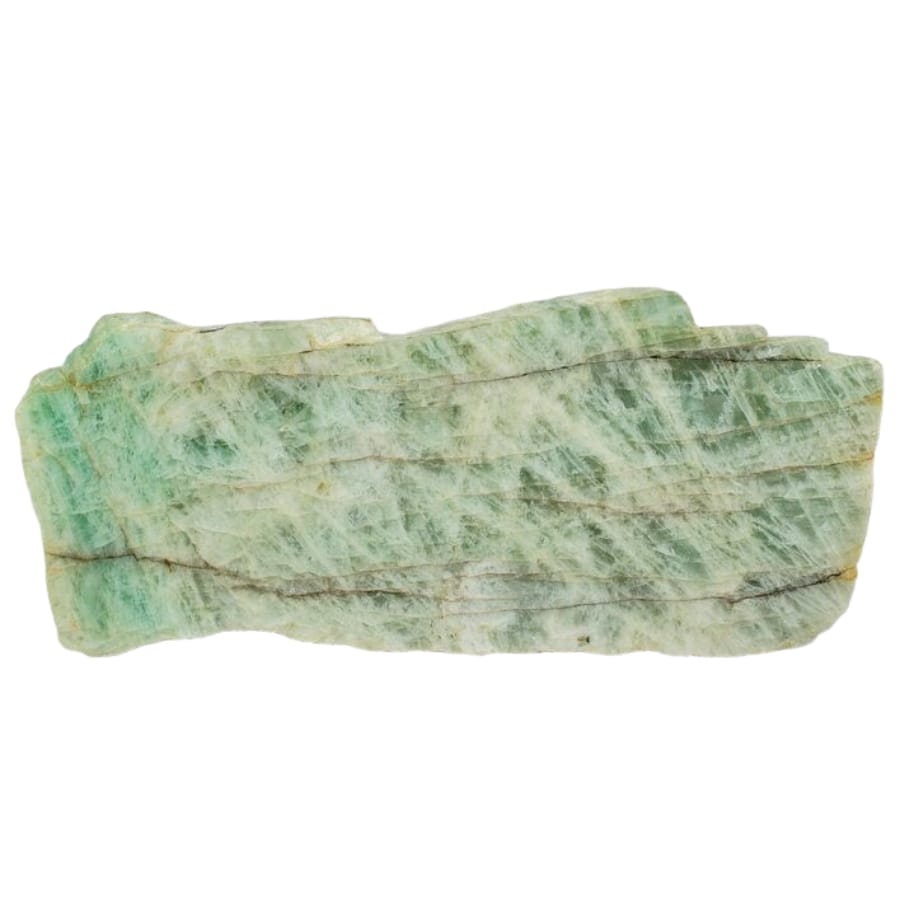
Beryl is a fascinating mineral, the family name for certain well-known jewels such as emeralds and aquamarines.
It’s typically a transparent or pale-hued crystal, but when impurities are present, it can transform into those lovely colored gemstones.
The term “beryl” derives from some ancient languages, including Latin and Greek, where it was known as “beryllus” and “beryllos,” respectively, and referred to a “precious blue-green color-of-sea-water stone.”
This demonstrates how long Beryl has been known and admired.
It can be found in rocks such as granite and pegmatites and metamorphic rocks, which have transformed over time due to heat and pressure. Its crystals can grow quite large and are frequently transparent and bright.
People value beryl for a variety of reasons. It’s a beautiful and clear crystal in its pure form, but it becomes unique when combined with other colorful gemstones.
Emeralds, a type of green beryl, are prized for their rich color and scarcity. Blue aquamarines are prized for their pure, sea-water-like tint.
Because they are both gorgeous and durable, these gemstones are frequently used in jewelry such as rings, necklaces, and earrings.
Beryl and its variants aren’t simply beautiful; they’ve also had historical and cultural significance, symbolizing youth, love, and hope.
Where you can find Beryl in South Carolina
Beryl is common in South Carolina, particularly in the following areas:
- Diamond Hill Mine
- McConnell Mica Prospect
- Paris Mountain State Park
- Savannah River Bank
Kyanite
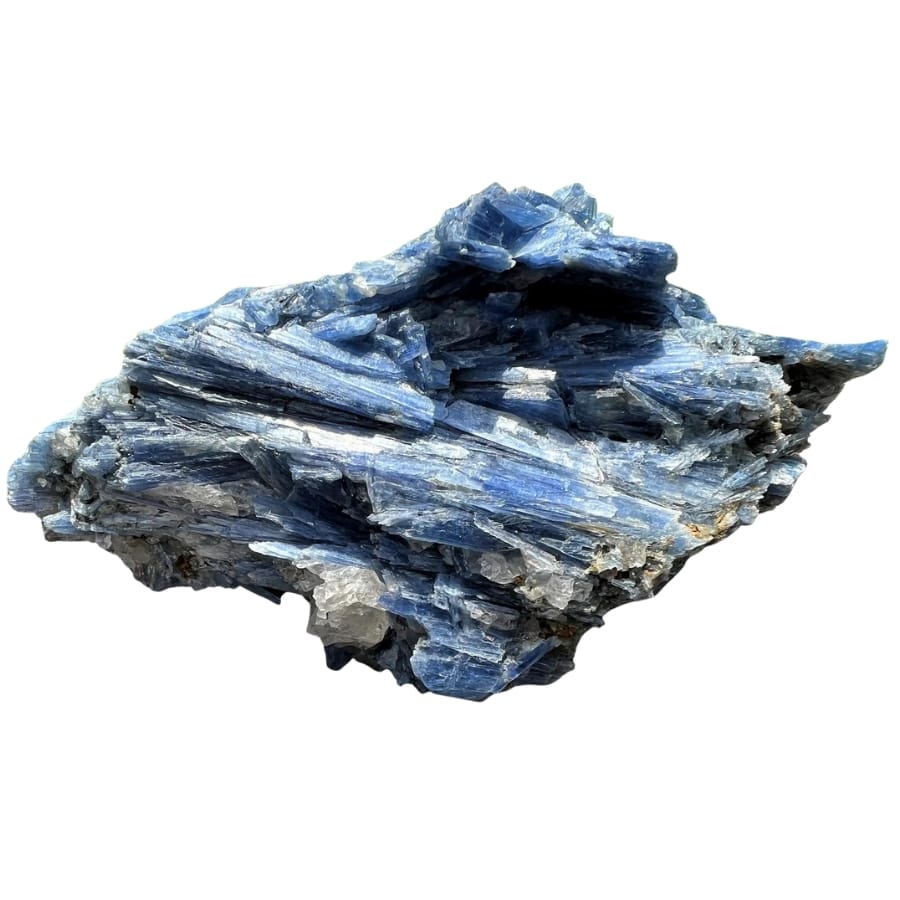
Kyanite is a fascinating mineral recognized for its deep blue color, similar to sapphire. The word “Kyanite” is derived from the Greek word “kyanos,” which means “deep blue.”
However, it can also be found in different colors such as green, orange, and black. It’s remarkable because contains two different hardnesses in a single crystal. It’s hard when scratched one direction, but softer when scratched another.
This is due to how its crystals grow, similar to how wood has variable hardness along and across its grain.
Kyanite begins as clay, and as the Earth’s plates move and squeeze these rocks, the heat and pressure change the clay into kyanite. Sometimes, large chunks can be discovered in these rocks, but they are usually in smaller, blade-like crystals.
Kyanite is valuable for a variety of reasons. Its lovely blue color makes it attractive in jewelry, such as necklaces and earrings. It’s not as intricate as some other jewels, so it must be cut and handled carefully, but its unusual appearance makes it worthwhile.
It also has some interesting industrial uses other than jewelry. It’s utilized in ceramics and electronics since it can resist high temperatures and doesn’t expand much with heat.
Where you can find Kyanite in South Carolina
Kyanite is abundant in South Carolina, notably in the following areas:
- Anderson Quarry
- Henry’s Knob
- King’s Creek
- Lake Murray Dam
- Worth Mountain
Rutile
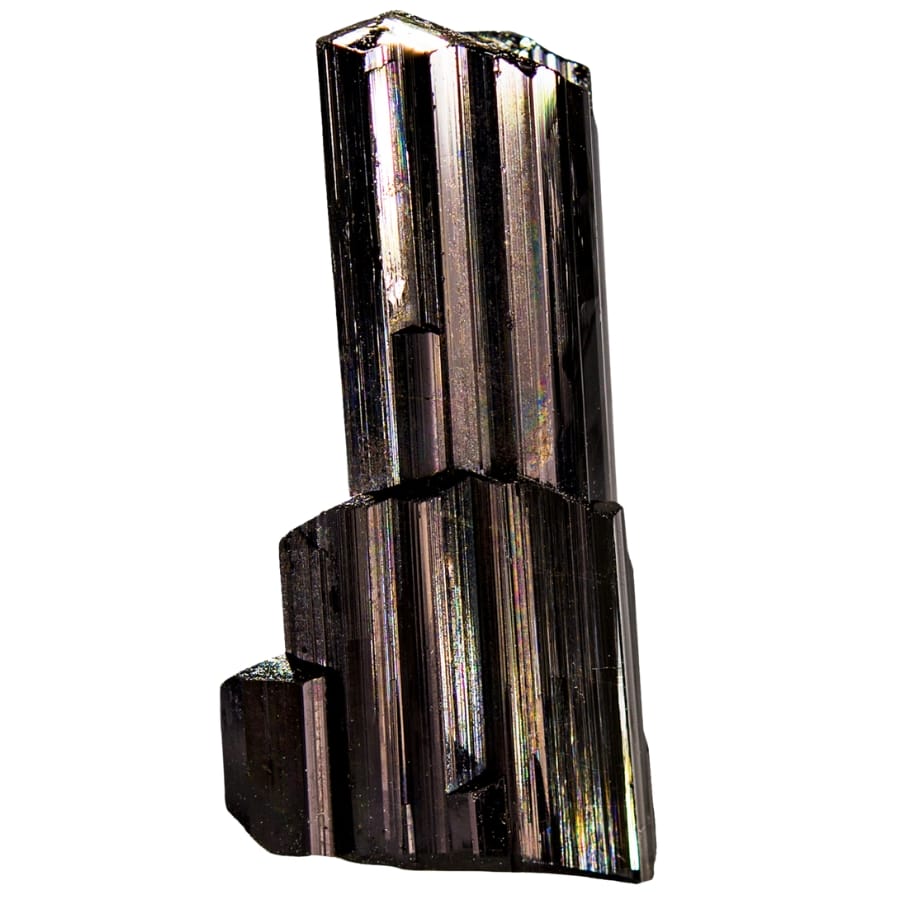
Rutile is a fascinating mineral known for its needle-like crystals and golden-red tint. The term “rutile” is derived from the Latin word “rutilus,” which means “reddish.” This makes sense because many rutile crystals are reddish or deep golden.
It’s composed of titanium dioxide, and it can be seen growing inside other minerals, such as quartz, which can be very interesting. Its crystals, like tiny needles, are frequently long and thin and can be highly shiny.
Rutile is pretty common and can be found worldwide, often in sandy deposits or rocks like granite and limestone.
People value rutile for many reasons. For starters, it’s a significant source of titanium used in various products such as airplanes, golf clubs, and even paint. Its titanium content makes it ideal for various industrial applications.
Rutile’s needle-like crystals are quite popular in the gemstone field. When these crystals are embedded in other stones, such as quartz, they make the stones appear more brilliant and intriguing.
Where you can find Rutile in South Carolina
South Carolina is rich in rutile minerals, particularly in the following areas:
- Bowens River
- Clearwater
- Perry Gravel Company
- Prosperity area
- Willimon Mine
Tourmaline
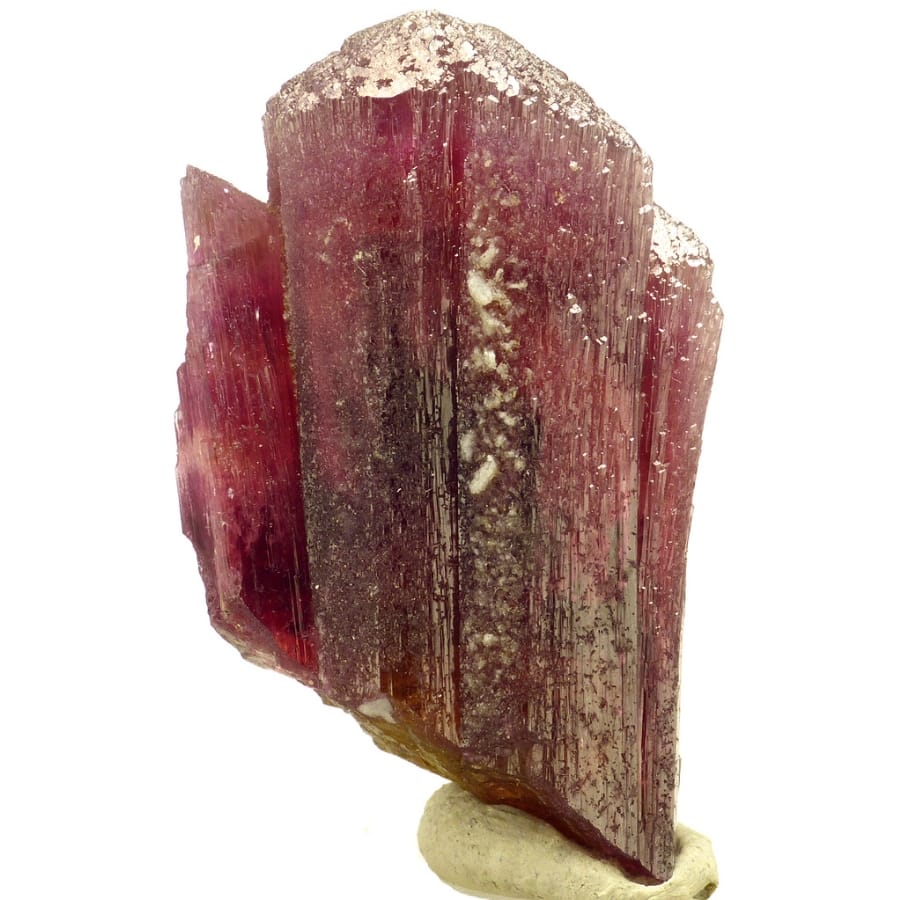
Tourmaline is a delightful gemstone that comes in about every color imaginable, from black to pink, green, blue, and even watermelon (which is green on the outside and pink on the inside, just like the fruit).
The term “tourmaline” is derived from the Sinhalese word “turmali,” which was used to describe mixed-colored stones in Sri Lanka.
A single crystal can have several colors because of chemical changes throughout its growth, which is extremely rare and unique in the world of gemstones.
Tourmaline is valued for its vast spectrum of colors and beauty. It’s widely utilized in jewelry, like as rings, necklaces, and earrings. Because it comes in so many different colors, each piece of jewelry made from it is unique.
Tourmaline is used in jewelry and collected by gem enthusiasts who appreciate its distinctiveness and the way it demonstrates how magnificent and diverse nature can be.
Where you can find Tourmaline in South Carolina
South Carolina has several tourmaline deposits, particularly in the following areas:
- Cowpens Mica Mine
- Davis Prospect
- Henry’s Knob
- Paris Mountain State Park
Zircon
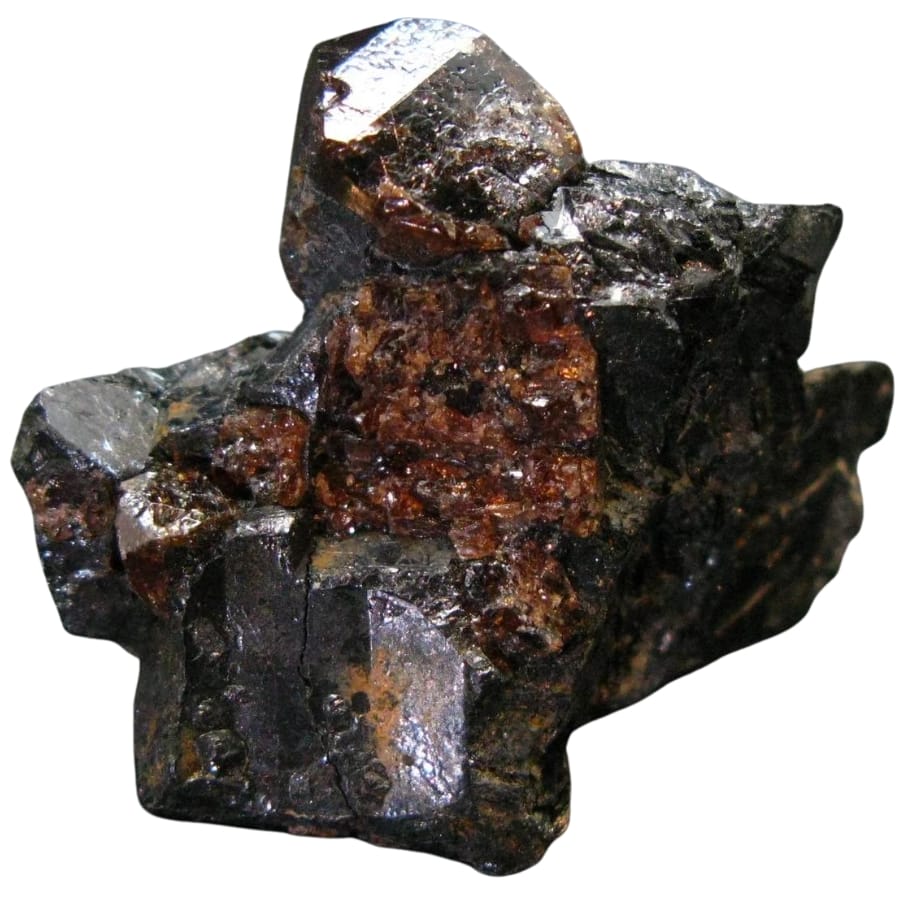
Zircon is a fascinating gemstone recognized for its brilliant and gleaming appearance. It’s available in a variety of colors, including blue, red, brown, and even clear.
The name “zircon” is thought to be derived from the Persian word “zargun,” which means “gold-colored.” However, not all zircons are gold-colored; they can be a variety of colors.
It’s frequently confused with cubic zirconia, a man-made diamond look-alike, but natural zircon is a distinct and one-of-a-kind gemstone. It’s one of the oldest minerals known on Earth, which makes it quite unique.
Zircon is valuable for several reasons. For starters, it’s really sparkling and lovely, thus it’s frequently used in jewelry including as rings, necklaces, and earrings. Clear zircons can resemble diamonds, making them a popular choice for those seeking a diamond-like appearance at a lower cost.
Where you can find Zircon in South Carolina
It’s easy to find it in the state, especially in these areas:
- Broad River
- Catawba River
- Clearwater
- Perry Gravel Company
Unakite

Unakite is an unusual rock composed of green epidote, pink orthoclase feldspar, and clear quartz. With its various hues mingled together, it resembles a mosaic.
The term “unakite” is derived from the Unaka mountain range in the southeastern United States, where it was discovered.
It’s mostly green and pink, which distinguishes it from other rocks. These hues are caused by the minerals found in unakite: the green is epidote, and the pink is feldspar.
It can be found in regions where there were once mountains or where rocks have been squashed and heated, such as parts of South Carolina.
Unakite is recognized in South Carolina for its beauty and distinctiveness. Although it is not as well-known as jewels such as diamonds or rubies, people admire its beautiful hues and patterns.
It’s commonly used in jewelry, such as beads for bracelets and necklaces. It’s also popular among rock and mineral collectors because it’s unique and not something you see daily.
Where you can find Unakite in South Carolina
Unakite can mostly be found at Lake Greenwood in the state.
Our Favorite Places For Gem Mining in South Carolina
We have selected five outstanding places to dig for gems out of the many suitable locations. These locations are perfect for both experienced gem hunters who want to participate in searching for gems and young children who are just beginning to explore gem hunting.
Always Confirm Access and Collection Rules!
Before heading out to any of the locations on our list you need to confirm access requirements and collection rules for both public and private locations directly with the location. We haven’t personally verified every location and the access requirements and collection rules often change without notice.
Many of the locations we mention will not allow collecting but are still great places for those who love to find beautiful rocks and minerals in the wild without keeping them. We also can’t guarantee you will find anything in these locations since they are constantly changing.
Always get updated information directly from the source ahead of time to ensure responsible rockhounding. If you want even more current options it’s always a good idea to contact local rock and mineral clubs and groups
Diamond Hill Mine

100 Diamond Mine Rd, Abbeville, SC 29620, United States
Diamond Hill Mine is nestled in the foothills of the Blue Ridge Mountains and has been producing some of the finest gems and minerals since it opened in 1989. You can experience hands-on mining by digging for their gems, crystals, and minerals and are welcome to take home their finds. With its unique setting and friendly staff, Diamond Hill Mine is the perfect destination for families exploring nature’s hidden treasures.
The Types Of Gems Found At Diamond Hill Mine
This area is distinguished for its variety of unique and more common gems, but the most gems found here include:
- Amethyst
- Beryl
- Epidote
- Garnet
- Smoky Quartz
The Best Time To Visit Diamond Hill Mine
The best time to visit Diamond Hill Mine is spring and summer when the weather is warm. It is much easier to find gems due to the increased water levels.
If you want REAL results finding incredible rocks and minerals you need one of these 👇👇👇
Finding the coolest rocks in isn’t luck, it's knowing what to look for. Thousands of your fellow rock hunters are already carrying Rock Chasing field guides. Maybe it's time you joined the community.
Lightweight, mud-proof, and packed with clear photos, it’s become the go-to tool for anyone interested discovering what’s hidden under our red dirt and what they've already found.
Join them, and make your next rockhounding trip actually pay off.
What makes it different:
- 📍 Find and identify 140 incredible crystals, rocks, gemstones, minerals, and geodes across the USA
- 🚙 Field-tested across America's rivers, ranchlands, mountains, and roadcuts
- 📘 Heavy duty laminated pages resist dust, sweat, and water
- 🧠 Zero fluff — just clear visuals and straight-to-the-point info
- ⭐ Rated 4.8★ by real collectors who actually use it in the field
Paris Mountain State Park
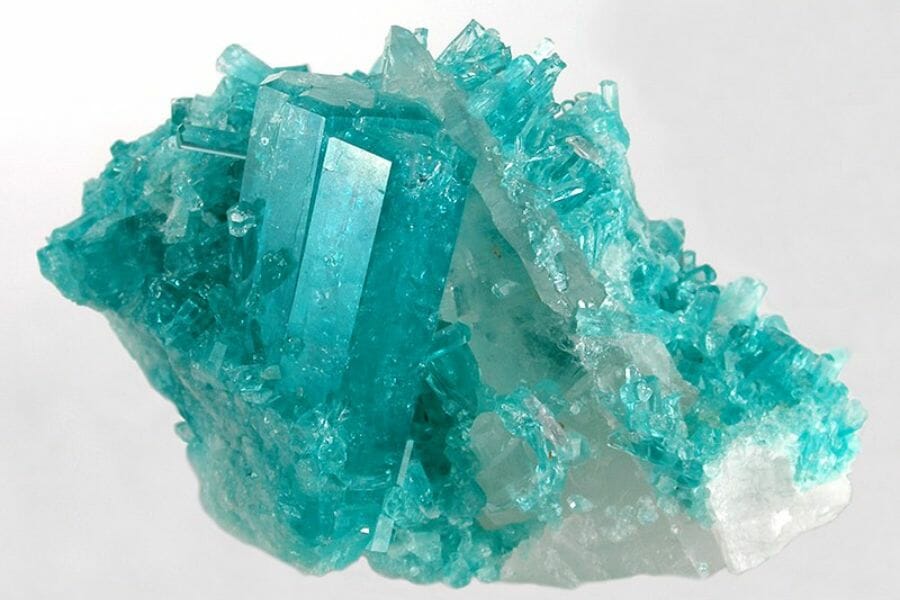
2401 State Park Rd., Greenville, SC 29609, United States
Paris Mountain State Park is a popular destination for discovering gemstones. It is one of the top activities at the park, with gem hunters flocking to the area to try their luck at finding precious stones. The park is home to several gem mines that offer buckets of dirt filled with semi-precious stones. You can pan for gems in the creek at the mountain’s base or use sluice boxes and screens to sift through soil. You can also search for fascinating South Carolina crystals in this spot.
For those who want a more hands-on experience, guided tours will help you identify different gems and teach you how to use proper mining techniques. Whether you’re looking for a fun outdoor activity or hoping to uncover valuable gems, Paris Mountain State Park is a great place to explore!
The Types Of Gems Found At Paris Mountain State Park
Rare and more common gems are abundant in this area, although the most gemstones found here are:
- Beryl
- Garnet
- Quartz
- Sillimanite
- Tourmaline
The Best Time To Visit Paris Mountain State Park
Spring and summer are the best times to visit Paris Mountain State Park and find gems. From April to August, the park offers activities like finding gems in its man-made flume. The flume is filled with a mix of soil and gems, which makes it easy for gem miners to search for precious stones. During this time of year, temperatures are mild, and the weather is generally pleasant.
Myrtle Beach
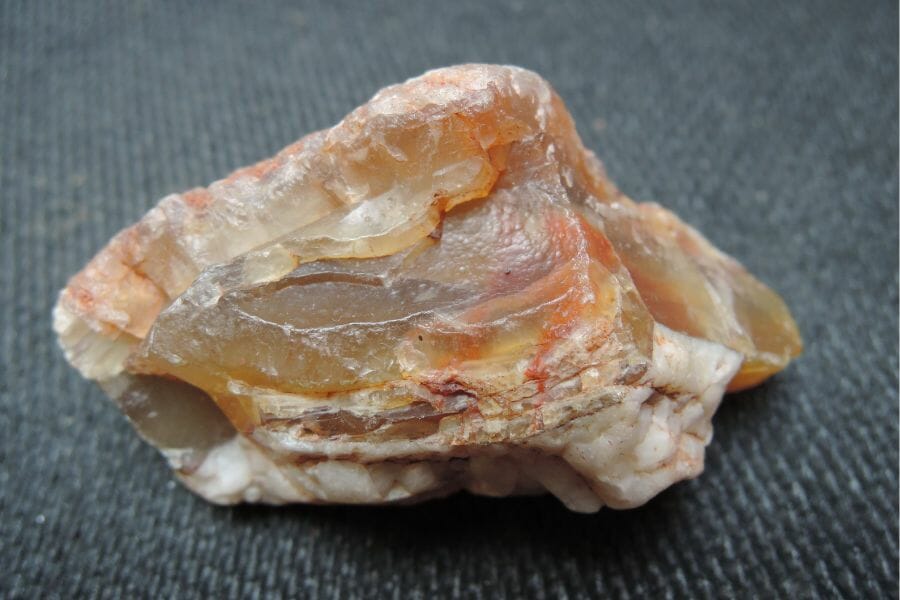
1200 North Oak Street, Myrtle Beach, SC 29577, United States
Myrtle Beach is an ideal spot to explore the wonders of finding gems and uncovering valuable stones. It offers a variety of activities, including panning for gems, fossil hunting, and jewelry making. You can also purchase custom-cut gemstones to take home as souvenirs or gifts. With its beautiful beaches, friendly staff, and wide range of activities, Myrtle Beach is an excellent location for searching for gems that the whole family will enjoy!
The Types Of Gems Found At Myrtle Beach
This location is rich in gemstones, but the most frequent ones are:
- Agate
- Chalcedony
- Quartz
The Best Time To Visit Myrtle Beach
The best time to visit Myrtle Beach to mine gems is during the summer, from June to August. During this time, the water is generally calm enough for divers to explore the ocean floor for gems safely. The beaches provide an excellent place to search for beach glass and other gems washed ashore from the ocean.
Greenville Gemstone Mine – Great for kids
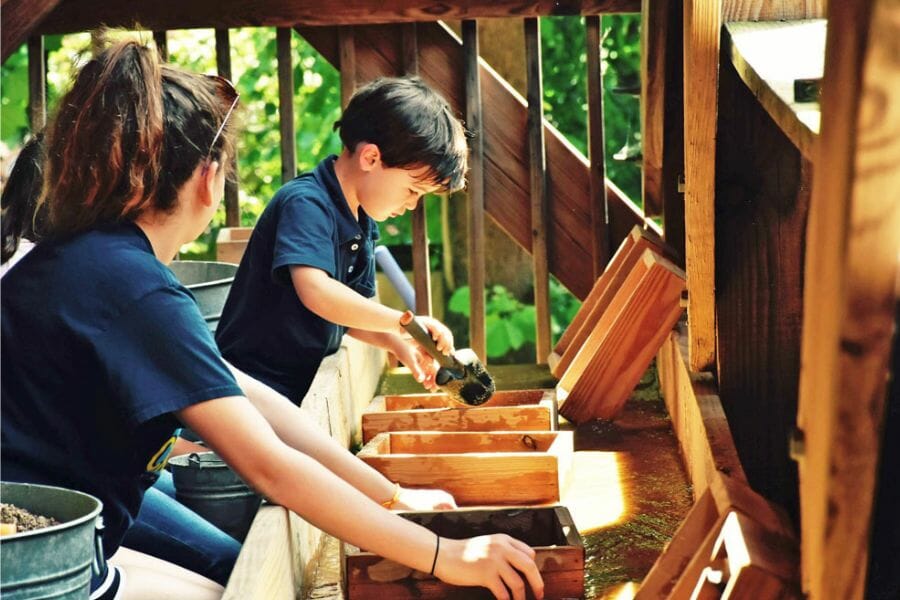
205 N Main St, Greenville, SC 29601, United States
Greenville Gemstone Mine is a family-owned and operated business that has been in operation for over 20 years. The mine offers a unique experience for all ages to search for gemstones and minerals, where you can purchase buckets of material or use the sluice box to search for gems and minerals on-site. The staff provides helpful advice on the best methods to dig for gems and minerals and provides an educational experience with their rock identification classes. There is also a gift shop where you can purchase jewelry made from the gems they find and other souvenirs.
Types Of Gemstones Found At Greenville Gemstone Mine
Here are the featured gemstones at Greenville Gemstone Mine:
- Amethyst
- Aquamarine
- Citrine
- Garnet
- Kyanite
- Peridot
- Rose Quartz
- Rutilated Quartz
- Sapphire
- Smoky Quartz
- Topaz
The Best Time To Visit Greenville Gemstone Mine
The best time to visit the Greenville Gemstone Mine is in the spring. The mine is open year-round, and you can take advantage of guided tours, gemstone panning activities, and more.
Coastal Gem Mining – Great for kids
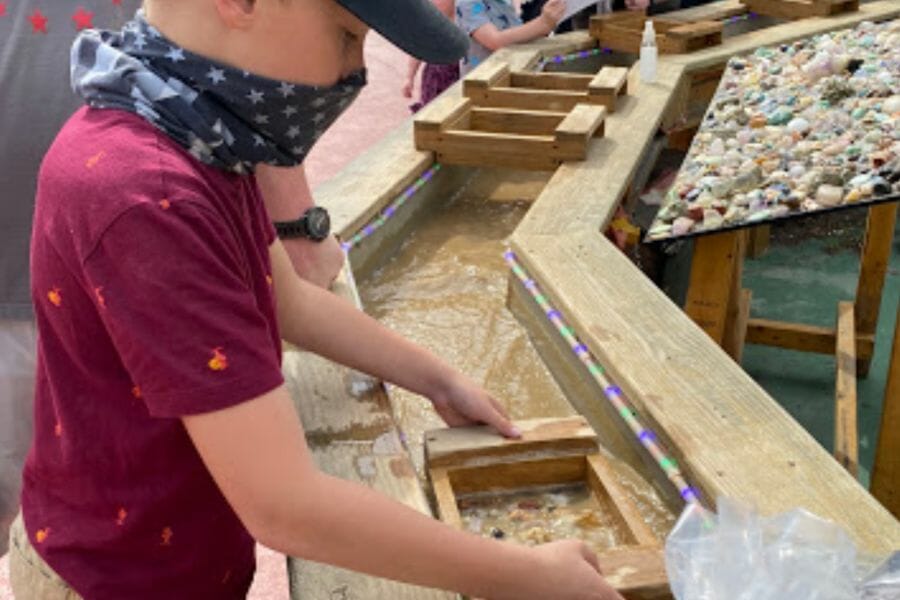
Celebrity Cir, Myrtle Beach, SC 29577, United States
Coastal Gem Mining is a family-owned business located in Myrtle Beach. The rock shop specializes in mining for precious gems, minerals, and fossils from around the world. The shop offers a unique experience for gem hunters of all ages, allowing them to search through their large selection of rough gems, sorting through dirt and rocks to find hidden treasures.
They also have a variety of handcrafted jewelry made with the gemstones found in their shop or provided by their customers. Coastal Gem Mining has something for everyone and provides a fun way to explore the natural beauty of gemstones!
The Types Of Gemstones Found At Coastal Gem Mining
In this area, you can discover a huge variety of gemstones. The gemstones you may find here are:
- Amethyst
- Aquamarine
- Citrine
- Emerald
- Garnet
- Moonstone
- Opal
- Peridot
- Quartz
- Ruby
- Sapphire
The Best Time To Visit Coastal Gem Mining
The best time to visit Coastal Gem Mining is during the summer months. The area experiences mild temperatures and sunny days, making it an excellent place for outdoor activities like searching for gems.
Other Great Options For Real Gem Mining in South Carolina

There are more incredible places in the state besides our top gem hunting areas. Adults who want to do real gem mining can visit these locations on our list:
- Bowens River – Amethyst, Emerald, Quartz, Sapphire
- Flat Creek – Pyrite
- Haile Gold Mine – Pyrite, Quartz
- Henry’s Knob – Kyanite, Lazulite, Tourmaline
- King’s Creek – Barite, Chalcopyrite, Kyanite, Quartz, Pyrite, Sillimanite
- Lake Murray Dam – Kyanite
- Liberty Hill – Smoky Quartz, Zircon
- Savannah River Bank – Aquamarine, Beryl
- Shoals Junction – Amethyst, Quartz
- Turkey Creek – Serpentine
The Top Public Gem Mining Locations in South Carolina

We have areas for more family-friendly public gem mining. The wonderful locations listed below are perfect for families and children.
- A&A Rockshop – 1614, 1624 W Main St, Lexington, SC 29072, United States
- Dixie Gem – 2517 Poinsett Hwy, Greenville, SC 29609, United States
South Carolina Gem Mining Laws And Regulations
Although the state does not have any specific regulations related to recreational gem hunting, it is illegal to remove or disturb rocks, minerals, and fossils from state parks or other public lands without permission from the South Carolina Department of Natural Resources (DNR).
It is essential to understand that the state does have laws and regulations for prospecting and collecting minerals on public lands. It is also unlawful to sell or trade any rocks, minerals, or fossils collected on public lands without a valid permit from the DNR.
Visitors should note that some areas may be closed to recreational gem hunting for ecological reasons. Before visiting an area for gem hunting purposes, you have to check with local land managers for any restrictions that may be in place.
For more information about South Carolina’s gem mining laws and regulations, visit the South Carolina Department of Natural Resources (DNR) link above.
Additional places to mine for gems in nearby states
As soon as you’ve had the chance to visit all places on the list we’ve provided above, use the recommendations we’ve created below to discover more gems in nearby states:
If you have any recommendations we haven’t covered, please leave them in the comments below!


